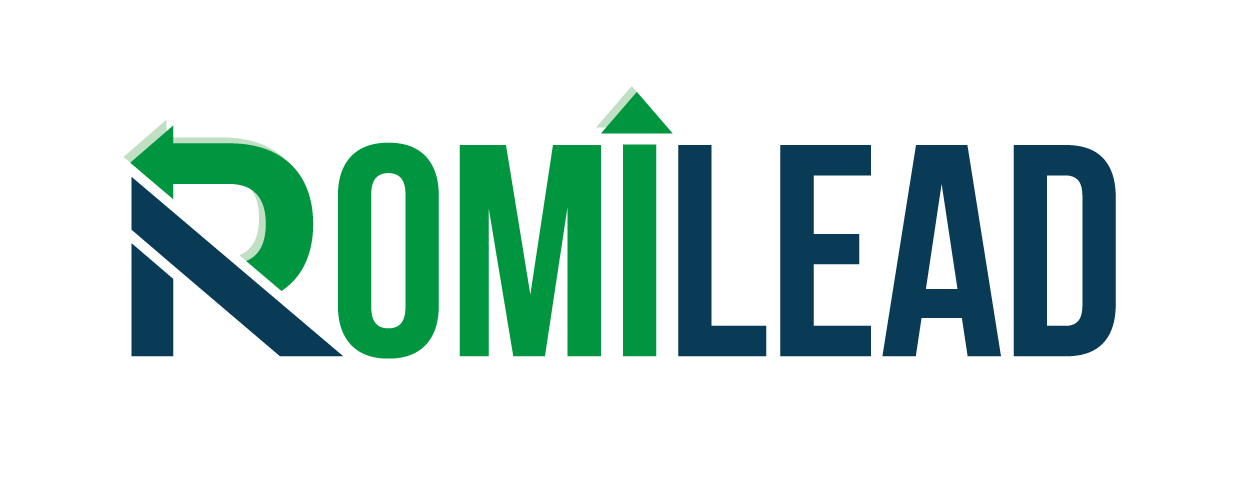Why Web2Web (Subscriptions in Web) is the best way to promote mobile apps in 2023?

What product started the trend of Web subscriptions? Why is it a must-have thing to try in 2023?
The first example of a Weight Loss product with Web subscriptions that I've noticed in 2019 was Web Quizzes from the well-known and respected company BetterMe (I advertised it while working in AdQuantum mobile agency) . Around the same time, Noom (one of the largest players in the Health&Fitness category in terms of revenue to this day), Hint (a veteran of the astrology niche) and many others were actively buying subscriptions with Web2Web funnel.
Now the trend of creating such Quizzes continues to drow and every week you can see new Apps who release their Web-funnels. It's worth to mention that such funnels are suitable only for non-gaming applications with subscription monetization and not in every niche such a funnel can perform well.
How this funnel is usually built for Weight loss products: the user goes through a quiz of 15-30 questions about the current weight, desired weight, height, age, gender, email and much more, then the person sees the benefits of "personally calculated and unique" weight loss program, testimonials from happy customers and at the end of various payment plans on a paywall.
Then after getting a trial or purchasing a subscription, the user usually sees a link to install the application with auto-login, where they type thier email as it was on a quiz. Then receives an email with instructions for activating the subscription in the application along with a link to it. Sometimes products who just launched a first UA test manually send promo codes for access to an app with instructions for activation, but it is better not to do so of course.
Basically in the Russian-speaking UA community everyone makes an example of these three Web2Web innovators, I especially admire the Ukrainian company BetterMe with their insane number of different quizzes for any audience that & ad creatives. Respect!
Now the trend of creating such Quizzes continues to drow and every week you can see new Apps who release their Web-funnels. It's worth to mention that such funnels are suitable only for non-gaming applications with subscription monetization and not in every niche such a funnel can perform well.
How this funnel is usually built for Weight loss products: the user goes through a quiz of 15-30 questions about the current weight, desired weight, height, age, gender, email and much more, then the person sees the benefits of "personally calculated and unique" weight loss program, testimonials from happy customers and at the end of various payment plans on a paywall.
Then after getting a trial or purchasing a subscription, the user usually sees a link to install the application with auto-login, where they type thier email as it was on a quiz. Then receives an email with instructions for activating the subscription in the application along with a link to it. Sometimes products who just launched a first UA test manually send promo codes for access to an app with instructions for activation, but it is better not to do so of course.
Basically in the Russian-speaking UA community everyone makes an example of these three Web2Web innovators, I especially admire the Ukrainian company BetterMe with their insane number of different quizzes for any audience that & ad creatives. Respect!
Why Web subscriber's LTV can be 3 times higher than on Mobile?
In 2019, before the release of iOS14 with all following attribution issues and limitations, this way of selling in-app access was done mainly with 1 goal - to increase user's LTV. And there are 2 reasons for this:
1. On the Web, people are more willing to buy a subscription at a higher price than in an app. In an app, if you set the subscription price at $19.99 instead of $9.99 per month, most likely your CR (conversion rate) will drop by more than twice and final ROAS will drop. Meanwhile on a Web Paywall you can nicely customize the sale process by adding, for example, price breakdown by day or an additional discount when user intends to close the website. Also upsales and upgrades can add some more value $ to an LTV.
I've worked with products who had such a different pricing: $14.99 per week, $39.99 per month, $79.2 per quarter, lifetime access for $149.99 pr even combination of 3 pricing options for a different duration. Even if paid acquisition works with predicted profit at the moment, you still need to test different pricing options and UI to improve your ROI. Product manager's goal is to kill two birds with one stone: 1) to achieve the highest possible ROI of advertising campaigns (combination of conversion and LTV, higher revenue from click) and to minimize the risk of Paypal/Stripe account blocking/freezing.
I faced the blocking of Paypal accounts twice with different projects and in both cases huge amount of money were frozen ($450k and $1.1M). In both cases Paypal returned the money (thank to our lawyers), BUT all rebills (repeated payments) on subscriptions were lost, it was hundreds of thousands of dollars... The consequence of this cases for UA managers was a decreased target payback period so the UA volume dropped significantly.
2. The second reason for LTV growth is a better subscriptions renewal comparing to an iOS app. The reason for this is that in Apple devices canceling all in-app subscriptions can be done in the Apple ID settings and every Apple user knows how to deal with that.
What is the situation with unsubscribing on Web?
Here everything is very individual as different companies have different policies on refunds based on financial and reputational risks. I described the financial risks above (blocking payments), and reputation can be damaged by reviews to the application or advertising in the format of "SKAM".
Most often a user can unsubscribe only by writing to Support via email, where responses usually take dozens of hours. Also there is an option to appeal the transaction in Paypal or with bank customer support, which is already "on the counter" of allowed appeals. If the percentage of problematic transactions is higher than 2-3% of the total number (the exact figures vary from one payment system to another and from one client to another), problems may start.
Companies that are just starting their way in accepting Web payments (average turnover is below $100k/month during the last six months) should be extra careful. Because of quick disputes or refunds increase your Paypal/Stripe account may be at risk.
Stripe is a bit more loyal in this aspect and blocks clients' wallets less often, but with Paypal payment option there will be definitely an increase in conversion rate to trial and subscription from 25% to 50%. An ideal payment setup for US and Tier1 countries should include:
1) Payment by card
2) Payment via Paypal
3) Payment via Apple Pay/Google Pay.
1. On the Web, people are more willing to buy a subscription at a higher price than in an app. In an app, if you set the subscription price at $19.99 instead of $9.99 per month, most likely your CR (conversion rate) will drop by more than twice and final ROAS will drop. Meanwhile on a Web Paywall you can nicely customize the sale process by adding, for example, price breakdown by day or an additional discount when user intends to close the website. Also upsales and upgrades can add some more value $ to an LTV.
I've worked with products who had such a different pricing: $14.99 per week, $39.99 per month, $79.2 per quarter, lifetime access for $149.99 pr even combination of 3 pricing options for a different duration. Even if paid acquisition works with predicted profit at the moment, you still need to test different pricing options and UI to improve your ROI. Product manager's goal is to kill two birds with one stone: 1) to achieve the highest possible ROI of advertising campaigns (combination of conversion and LTV, higher revenue from click) and to minimize the risk of Paypal/Stripe account blocking/freezing.
I faced the blocking of Paypal accounts twice with different projects and in both cases huge amount of money were frozen ($450k and $1.1M). In both cases Paypal returned the money (thank to our lawyers), BUT all rebills (repeated payments) on subscriptions were lost, it was hundreds of thousands of dollars... The consequence of this cases for UA managers was a decreased target payback period so the UA volume dropped significantly.
2. The second reason for LTV growth is a better subscriptions renewal comparing to an iOS app. The reason for this is that in Apple devices canceling all in-app subscriptions can be done in the Apple ID settings and every Apple user knows how to deal with that.
What is the situation with unsubscribing on Web?
Here everything is very individual as different companies have different policies on refunds based on financial and reputational risks. I described the financial risks above (blocking payments), and reputation can be damaged by reviews to the application or advertising in the format of "SKAM".
Most often a user can unsubscribe only by writing to Support via email, where responses usually take dozens of hours. Also there is an option to appeal the transaction in Paypal or with bank customer support, which is already "on the counter" of allowed appeals. If the percentage of problematic transactions is higher than 2-3% of the total number (the exact figures vary from one payment system to another and from one client to another), problems may start.
Companies that are just starting their way in accepting Web payments (average turnover is below $100k/month during the last six months) should be extra careful. Because of quick disputes or refunds increase your Paypal/Stripe account may be at risk.
Stripe is a bit more loyal in this aspect and blocks clients' wallets less often, but with Paypal payment option there will be definitely an increase in conversion rate to trial and subscription from 25% to 50%. An ideal payment setup for US and Tier1 countries should include:
1) Payment by card
2) Payment via Paypal
3) Payment via Apple Pay/Google Pay.

Example of price discounting and choice of payment system from BetterMe's landing page on desktop
Solving the problem with purchase tracking and attribution
Starting from Mid 2021 performance of app install campaigns on iOS dropped because of iOS 14.5 tracking limitations. A lot of products started running ads with Web2App funnel, where between an Ad and Appstore the was a landing page with tracking link. It worked quite well for some products and even works now in some niches (i.e. books) but not it's not as good as Web subscriptions where you don't create an extra step for a user and meanwhile save 30% on Apple commission (better to pay 4-6% to Paypal/Stripe).
With Web2Web all user data after a payment goes directly to your server, from where you can send the fact of purchase with various parameters about the user directly to an advertising platform via Conversion API. Thus we don't care about tracking restrictions from the Apple side we can scale UA spend and run tests much faster. I advise you to start Web funnel tests with Facebook Ads, because for 90% of products it is the best advertising channel in terms of volume and return on investment. Moreover FB usually requires a minimum amount of budget and time for a test.
Below I will show an example of how the Event Manager settings of the web pixel should look like and what parameters should be sent to Facebook. The full list of accepted parameters can be found here.
With Web2Web all user data after a payment goes directly to your server, from where you can send the fact of purchase with various parameters about the user directly to an advertising platform via Conversion API. Thus we don't care about tracking restrictions from the Apple side we can scale UA spend and run tests much faster. I advise you to start Web funnel tests with Facebook Ads, because for 90% of products it is the best advertising channel in terms of volume and return on investment. Moreover FB usually requires a minimum amount of budget and time for a test.
Below I will show an example of how the Event Manager settings of the web pixel should look like and what parameters should be sent to Facebook. The full list of accepted parameters can be found here.

Web pixel in Facebook Event Manager has a combination of browser events and Purchase via CAPI

Event Match Quality which carries the parameters that are sent from the server to FB
When the pixel is installed and CAPI setup is finished, you can run ad campaigns with Sales Objective with Purchase event optimization. You should put utm tags in your ads, which will allow you to track events on campaigns in your analytics system (I recommend Amplitude but Google Analytics is also fine).
Examples of UTM tags that should be added to an url of the web funnel: utm_source=FBweb&utm_campaign=campaign1&utm_adset=Broad1&
utm_ad=creo1
Example of a dynamic utm tag (most projects use these to avoid typos and to save time): ad_id={{ad.id}}
&adset_id={{adset.id}}&campaign_id={{campaign.id}}&ad_name={{ad.name}}&adset_name={{adset.name}}
&campaign_name={{{campaign.name}}&media_source=facebook
What specific values should be written there depends on the analytics system you use. It is important to choose a single label format for all traffic sources and stick to it.
Examples of UTM tags that should be added to an url of the web funnel: utm_source=FBweb&utm_campaign=campaign1&utm_adset=Broad1&
utm_ad=creo1
Example of a dynamic utm tag (most projects use these to avoid typos and to save time): ad_id={{ad.id}}
&adset_id={{adset.id}}&campaign_id={{campaign.id}}&ad_name={{ad.name}}&adset_name={{adset.name}}
&campaign_name={{{campaign.name}}&media_source=facebook
What specific values should be written there depends on the analytics system you use. It is important to choose a single label format for all traffic sources and stick to it.
What subscriptions should I choose for a first test?
What are the metrics benchmarks for the USA?
What are the metrics benchmarks for the USA?
The first thing to do is to look at competitors in your niche or close to it, and see what payment plans and paywalls they use. Chose 3 or 4 of them, create something similar to it but with your style and features then run an A/B test with equal traffic split.
The market is actually divided into two camps: the first sells only direct subscriptions to speed up the money back. It can work well for a wealthy audience, for example US women over 45 years old.
You can see in the screenshot below what tricks products use when writing the price to increase conversion to subscription. This is not forbidden here, unlike Apple subscriptions, but the percentage of refunds can increase. Profit is above anything cause nobody wants new layoffs.
The market is actually divided into two camps: the first sells only direct subscriptions to speed up the money back. It can work well for a wealthy audience, for example US women over 45 years old.
You can see in the screenshot below what tricks products use when writing the price to increase conversion to subscription. This is not forbidden here, unlike Apple subscriptions, but the percentage of refunds can increase. Profit is above anything cause nobody wants new layoffs.

Direct paywall subscriptions
The second camp, which is the majority of the Web2Web market, sell a trial of varying duration and cost, and then charge a large payment monthly/quarterly or whatever they come up with. There are hundreds of options, below are 2 of them:

Trial subscriptions with intro-offer

Trial subscriptions with a dollar trial and an expensive six-month plan
To calculate target CPA for trial, you need to know GEO, product niche, subscription plans used, and the average benchmarks for Trial2Paid and rebills.
I have purchased the largest volumes of Health&Fitness Web quizzes on US, so I can give you average benchmarks here that allowed me to get a six months payback period and have 130% pROAS in 1 year predict:
For example, let's take a subscription plan with a 7-day trial that costs $1, followed by a 2-month subscription for $60. Average Trial2Paid is 45%, first subscription renewal rate is 50%, second is 60%. For payment provider commission, refunds and disputes can charge you extra 10% It turns out on 190D we will get from each trial
($60*45%+$60*45%*50%+$60*45%*50%*60%)-10%=($27+$13.5+$8.1)*0.9=$43.7.
With these metrics you need to buy trials cheaper than $43 for a 6 months payback period.
It's always better to target to the higher profit margin for unexpected situations. At the same time product should not stop experimenting with pricing, paywalls, upsells, and funnel improvements at all stages of the funnel. In Amplitude or Google Analytics, you can track all funnel step conversion rates and track where the biggest churn is happening.
Usually the biggest churn is on the very first screen, where 30-50% of users fall off on average. And also the payment screen - the average conversion from a visit to a trial varies from 1 to 5% and depends on the product itself and the creative used. Some UGC video creatives can show CR 7% meanwhile static ands will have CR 1.5% but profitability can be the same because of CPC difference on both creatives.
Good luck with Web2Web, it's a great thing to test for most of the product. It can reinvigorate your products' life if mobile-only advertising can't give you this freedom.
Contact me if you need any advice with it.
I have purchased the largest volumes of Health&Fitness Web quizzes on US, so I can give you average benchmarks here that allowed me to get a six months payback period and have 130% pROAS in 1 year predict:
For example, let's take a subscription plan with a 7-day trial that costs $1, followed by a 2-month subscription for $60. Average Trial2Paid is 45%, first subscription renewal rate is 50%, second is 60%. For payment provider commission, refunds and disputes can charge you extra 10% It turns out on 190D we will get from each trial
($60*45%+$60*45%*50%+$60*45%*50%*60%)-10%=($27+$13.5+$8.1)*0.9=$43.7.
With these metrics you need to buy trials cheaper than $43 for a 6 months payback period.
It's always better to target to the higher profit margin for unexpected situations. At the same time product should not stop experimenting with pricing, paywalls, upsells, and funnel improvements at all stages of the funnel. In Amplitude or Google Analytics, you can track all funnel step conversion rates and track where the biggest churn is happening.
Usually the biggest churn is on the very first screen, where 30-50% of users fall off on average. And also the payment screen - the average conversion from a visit to a trial varies from 1 to 5% and depends on the product itself and the creative used. Some UGC video creatives can show CR 7% meanwhile static ands will have CR 1.5% but profitability can be the same because of CPC difference on both creatives.
Good luck with Web2Web, it's a great thing to test for most of the product. It can reinvigorate your products' life if mobile-only advertising can't give you this freedom.
Contact me if you need any advice with it.
Hello, dear reader! My name is Artemy Proskuryakov, I've been promoting mobile apps, games and other products in a wide variety of industries for over 6 years. During this time I've worked with more than 70 different apps and products, successfully spinning off more than $70M on Facebook, TikTok, Taboola, Snapchat, Twitter, Outbrain. I've consulted over 50 times about User Acquisition to app owners and marketers. In this blog I want to share my knowledge and experience with a wide range of people.
Subscribe to my profile on LinkedIn to rear new articles: https://www.linkedin.com/in/artemiypro
Contact me on Telegram: https://t.me/artemiypro
Subscribe to my profile on LinkedIn to rear new articles: https://www.linkedin.com/in/artemiypro
Contact me on Telegram: https://t.me/artemiypro
Need help with User Acquisition for Web2Web?
We are a growth agency specialized in acquisition, monetization and engagement strategies for mobile apps & games. We help you define your growth strategy and leverage marketing tools to tackle all lifecycle stages: acquisition, activation, retention, monetization, and churn.
You agree to our Terms and Conditions

ROMILEAD LTD
Boumpoulinas, 1-3, BOUBOULINA BUILDING, Flat/Office 42, 1060, Nicosia, Cyprus
Boumpoulinas, 1-3, BOUBOULINA BUILDING, Flat/Office 42, 1060, Nicosia, Cyprus

